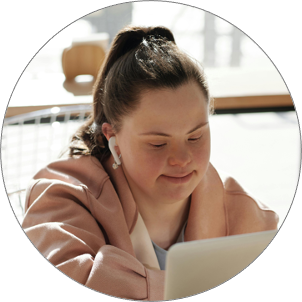Push beyond "one and done"
/Let's take retrieval to the next level.
So far, we've focused on retrieval practice – improving learning by bringing information to mind. There are many ways to define it (add yours here) and many ways to foster retrieval in our classrooms.
But when and how often? Is more retrieval practice better than less?
This week, we feature research on successive relearning. In a nutshell, successful relearning is a combination of engaging in retrieval practice multiple times, while also spacing those retrievals out over time.
Read on for rigorous research, teaching recommendations, and info about two leading scientists who investigate successive relearning, Katherine Rawson and John Dunlosky, professors at Kent State University.
We also have links to research, YouTube videos, and more cognitive scientists on our website – science, straight from the source. How often do you provide opportunities for retrieval in your classroom? Let us know how you take it to the next level and push beyond "one and done."
Retrieval + Spacing = Successive Relearning
When it comes to our instruction and students' studying, we want to use strategies that are both effective and efficient. We don't have time to keep teaching things over and over again, and students don't want to keep studying things over and over again, either.
Welcome to successive relearning. It's not simply engaging in retrieval once or even repeatedly. It's providing retrieval practice frequently over time.
In a study by Katherine Rawson and John Dunlosky, conducted in an authentic Introductory Psychology course, college students learned course concepts using a computerized flashcard program under the following conditions:
Successive Relearning: Students engaged in retrieval practice spaced throughout the semester, and they had to retrieve information correctly three times
Spaced Restudy: Students engaged in restudying, spaced throughout the semester (without retrieval)
Baseline: Students engaged in "business as usual" without using the flashcard program
For example, students engaged in spaced retrieval or restudy one day after the introduction of material, 3 days later, 8 days later, 10 days later, 15 days later, etc. Real spacing in a real classroom throughout the semester-long course.
In two experiments, the successive relearning condition increased students' course exam performance by a letter grade (from a C to a B) compared to the spaced restudy and baseline conditions. This benefit was consistent for both higher and lower performing students and more robust for three spaced retrieval sessions compared to only one retrieval session. As scientists, we also strive to push beyond one and done; these findings were replicated in authentic K-12 classrooms, demonstrating the robust benefits of successive relearning.
Important: When students used the flashcard program and made their own decisions (e.g., they could decide when to drop cards from the deck), there was no benefit of retrieval on exam performance, also consistent with prior research.
Tip: Spacing out restudy sessions is okay, but spacing out retrieval practice is powerful. Provide low-stakes retrieval every few days, not all at once. It may present some logistical challenges during instruction and we encourage you to share your successive relearning strategies with our community via email and Twitter.
For two excellent reviews of the literature on successive relearning by Katherine Rawson and John Dunlosky, we recommend this brief review (7 pages) and a more in depth review (18 pages).
"The Power of Successive Relearning: Improving Performance on Course Exams and Long Term Retention"
Katherine A. Rawson, John Dunlosky, & Sharon M. Sciartelli
Educational Psychology Review (2013)
Katherine A. Rawson, Ph.D.
Katherine A. Rawson (Ph.D., University of Colorado) is a Professor of Psychological Sciences at Kent State University. Katherine primarily conducts research in two areas of learning:
Mechanisms behind why retrieval practice improves learning, particularly in classroom settings
How reading comprehension becomes automatic. For example, how do skilled readers become skilled readers?
In 2010, Katherine and Mary A. Pyc, Ph.D. published an article in Science on the "mediator effectiveness hypothesis," which suggests that retrieval practice improves learning because it strengthens the links and mediators between related information. This landmark research has contributed to current and ongoing investigations of why retrieval is effective, not just when and how.
As a leader in this area of research, Katherine has received numerous grants and awards, including the Presidential Early Career Award. Visit her laboratory website for more information and watch this brief YouTube video (3 minutes) on how instructors and parents can facilitate student learning.
John Dunlosky, Ph.D.
John Dunlosky (Ph.D., University of Washington) is a Professor of Psychological Sciences at Kent State University. John's primary area of research is on metacognition: how students think about and monitor their own learning, and subsequently how these beliefs drive students' study habits.
John also serves as director of the Science of Learning & Education (SOLE) Center, which aims to transform STEM education, health education, and literacy by applying evidence-based approaches in laboratory and applied settings.
In 2013, John, Katherine, and colleagues published a thorough review of 100+ years of research on cognitive strategies including retrieval practice, spacing, and interleaving. John's brief article, Strengthening the Student Toolbox (published by the American Federation of Teachers), is an excellent resource for both educators and students. If you'd like to read the 55-page peer-reviewed journal article, which delves into greater detail, it's available here.
Watch this YouTube video (7 minutes) and be sure to visit John's website for more.














